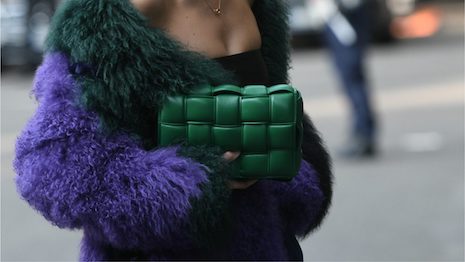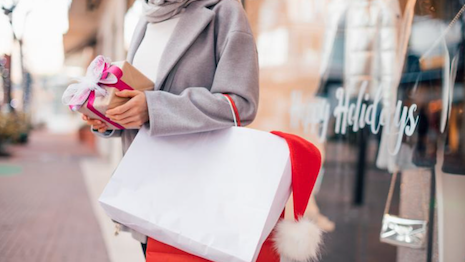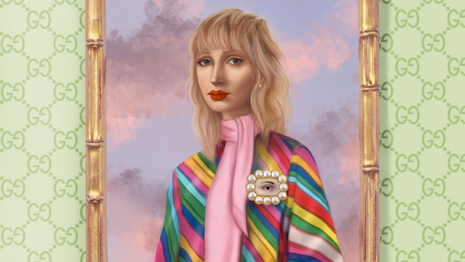 The personal luxury goods market is currently valued at about $302 billion. Image credit: Shutterstock
The personal luxury goods market is currently valued at about $302 billion. Image credit: Shutterstock
The personal luxury goods market is exhibiting an impressive rebound, according to new data from Bain & Company.
With fuel from a successful 2021 holiday shopping season, the personal luxury goods market has now reached 288 billion euros in value, or $303 billion at the current exchange rate. Several factors have led to the recovery, including a European recovery, diversity and inclusion efforts and hopes for continued spending in China.
“Despite significant macro-economic challenges, including hyperinflation, slowing GDP growth and the Russia-Ukraine conflict, the personal luxury goods market proved resilient once again,” said Claudia D’Arpizio, partner at Bain & Company, in a statement.
“Luxury goods brands started this year showing especially strong growth while also playing a leading role in the world’s ongoing sustainable and digital transformation.”
Steady climbs
Personal luxury goods — apparel, watches, jewelry and eyewear — are once again earning customer dollars.
The 2021 holiday season proved successful across several regions, reflecting a 7 percent increase from the same period in 2019.
 The 2021 holiday season helped fuel market recovery. Image credit: National Retail Federation
The 2021 holiday season helped fuel market recovery. Image credit: National Retail Federation
In the first quarter of 2022, the personal luxury goods market grew by 17-19 percent at current exchange rates, compared to the same period in 2021.
The market recovery reflects several global efforts, one being Europe’s growing local demand and consumer eagerness to return to shopping in a post-pandemic landscape.
Growth is also being attributed to diversity and inclusion efforts in the United States. With brands illustrating how products can reach all consumers of disparate body and skin types, customers feel more represented and are increasingly motivated to spend.
In keeping the recovery alive, experts are hopeful that consumer appetite for spending will be maintained in China, even amid COVID-19 restrictions.
South Korea is also credited with aiding the market recovery as the country is also continuing to respond to growing local demand.
Bain & Company is estimating growth for the personal luxury goods market to reach 360-380 billion euros, or $378-400 billion at the current exchange rate, by 2025.
The study also theorized two trajectories for the market in 2022, with one being that the growth exhibited in the first half of 2022 continues for the rest of the year, with the market reaching 320-330 billion euros, or $336-347 billion at current exchange, by the end of 2022, representing a 10 -15 percent increase from 2021.
The opposing trajectory entails a reduced growth pace due to a slower recovery in Mainland China, with the market reaching 305-320 billion euros, or $321-336 billion at the current exchange rate with a 5-10 percent increase from 2021.
Keeping the momentum
To fuel the continued market recovery, brands must continue contemplating their technology strategies and plans for the future. As Bain reports, by the end of 2030, digital assets and the metaverse will comprise 5-10 percent of the luxury market.
Several brands and retailers continue embracing the developing Web3 space.
 The gallery features an initial slate of 29 artists. Image courtesy of Gucci
The gallery features an initial slate of 29 artists. Image courtesy of Gucci
Italian fashion house Gucci is taking its presence in digital reality one step further with the launch of Vault Art Space and its first online exhibit and auction, “The Next 100 Years of Gucci.”
Created in partnership with NFT marketplace SuperRare, the gallery serves as a place to view and collect innovative pieces from contemporary artists. For the project, the brand selected 29 artists to create a telescopic vision of Gucci’s future through NFT installations (see story).
Brands must also approach their sustainability practices with genuine thoughtfulness, as consumers increasingly look for sensible products and policies that preserve the environment.
Sustainability was undoubtedly the buzzword of 2021 — a year that saw demand in pre-owned apparel skyrocket and an increased interest in luxury items.
According to Farfetch’s annual “Conscious Luxury Trends Report,” global consumers are choosing to shop more consciously, as the number of Farfetch customers who purchased conscious products increased by 60 percent in 2021. Additionally, brands are pushing circular initiatives and looking to measure and improve sustainability performance (see story).
“In the last few months, luxury brands have been forced to reroute their futures,” said Federica Levato, partner at Bain & Company, in a statement.
“Winners will rapidly embrace the changes, ensuring they fully understand the implications of new geopolitical dynamics and cultural trends for all of their stakeholders: consumers, investors, employees and society at large,” she said. “Those that come out ahead will take advantage of the opportunities presented by the virtual world, the sustainability transformation and preferences of younger generations.”